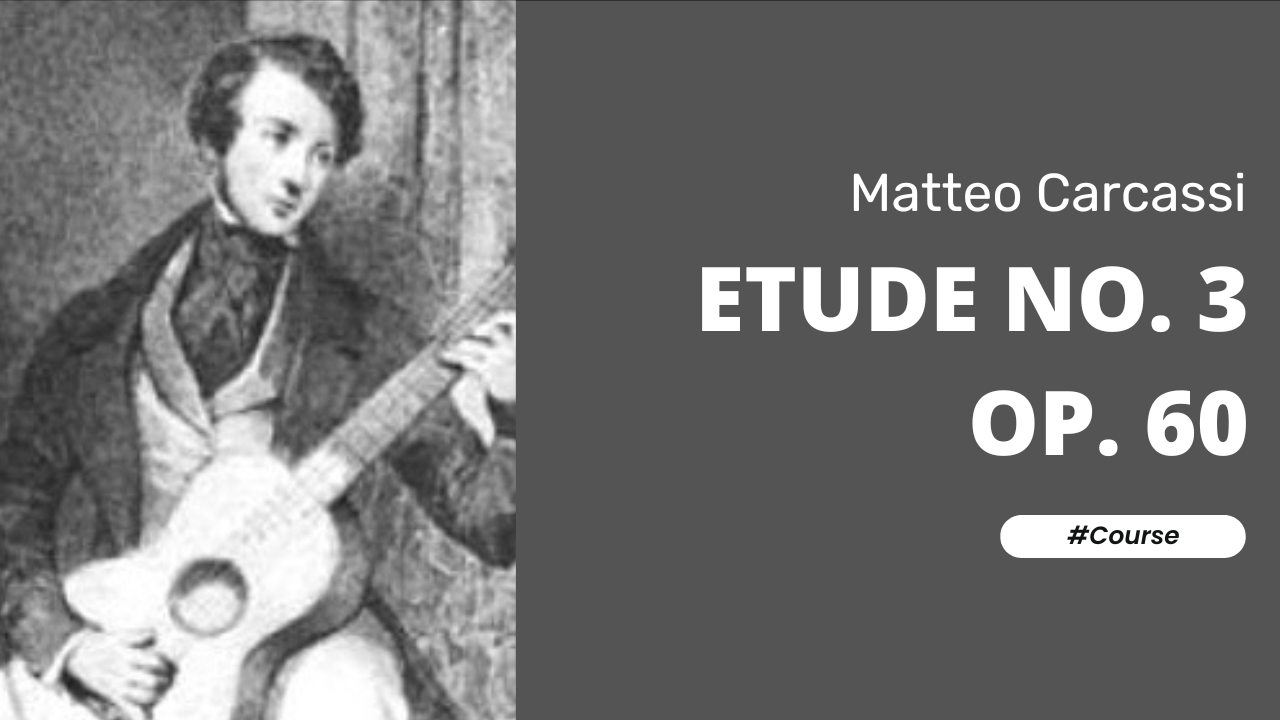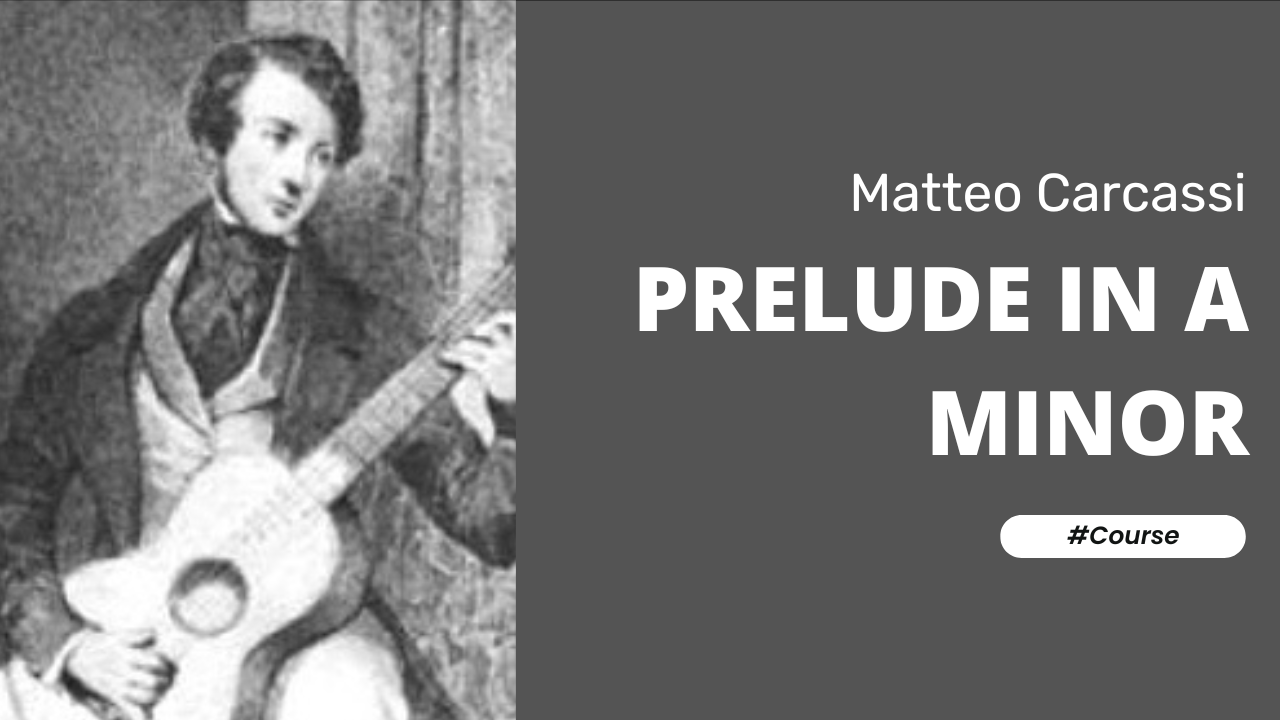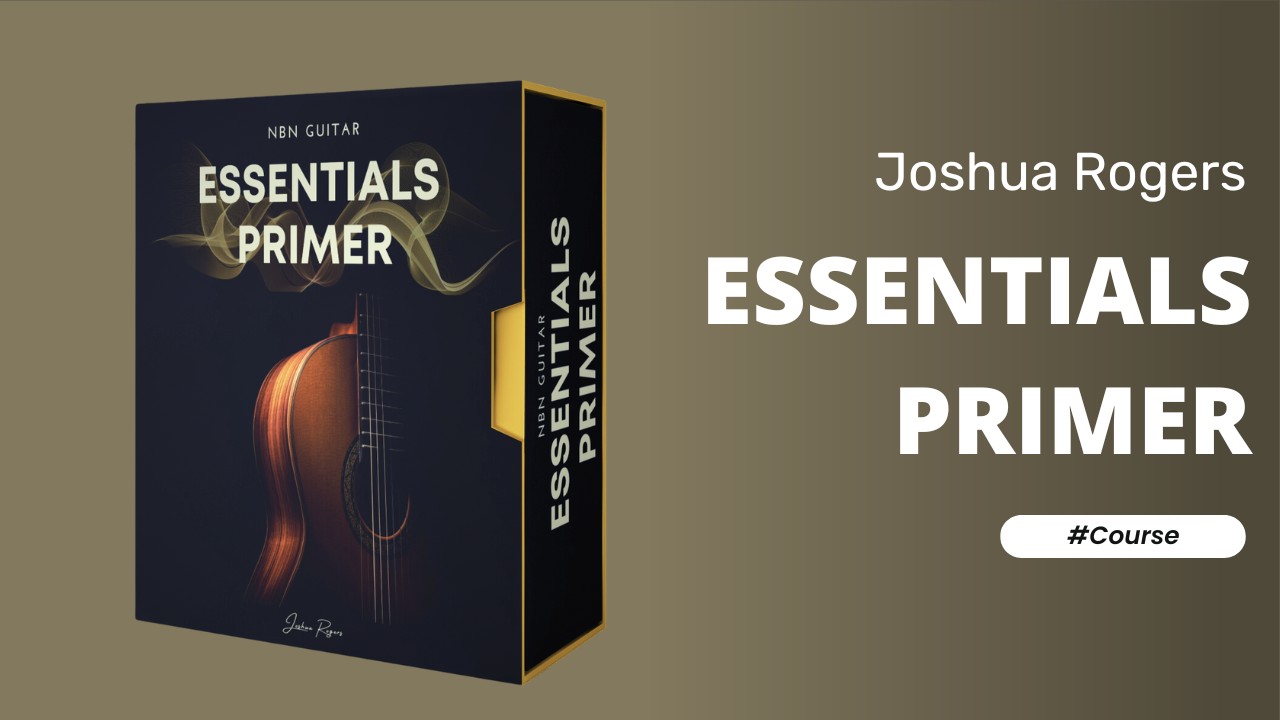Etude No. 7, Op. 60 by Matteo Carcassi
Introduction
Matteo Carcassi was a virtuoso Italian guitarist and a prolific composer during the early Romantic period. During his lifetime he made considerable contributions to the development of modern classical guitar technical fundamentals.
Etude No. 7, Op. 60 by Matteo Carcassi is a distinguished piece in the classical guitar repertoire, epitomising Carcassi’s exceptional ability to merge technical demands with musical elegance. Matteo Carcassi, an influential 19th-century Italian guitarist and composer, made significant contributions to guitar pedagogy through his “25 Etudes, Op. 60.” In a somewhat sad twist of fate his achievements were often overshadowed by those of Ferdinando Carulli.
Etude No. 7, Op. 60, is a perfect illustration of Carcassi’s pedagogical approach. This etude focuses on enhancing right-hand arpeggio skills and left-hand finger agility. The piece features rapid, flowing arpeggios that require precise finger placement and smooth transitions. Its melodic line is intertwined with these arpeggios, creating a seamless blend of technique and musical expression.
Performing Etude No. 7 requires both technical proficiency and interpretive insight. The guitarist must execute the arpeggios with clarity and fluidity, ensuring that each note is articulated cleanly. Additionally, the performer must bring out the expressive quality of the melody, employing dynamic contrasts and phrasing to convey the piece’s musicality.
Etude No. 7 serves not only as a technical exercise but also as a beautiful concert piece that showcases the guitar’s expressive range. Carcassi’s ability to combine instructional value with artistic beauty ensures that this etude remains a beloved and enduring part of the classical guitar repertoire. Its combination of technical challenges and musical appeal makes it a valuable study for guitarists seeking to improve their skills and deepen their interpretive abilities.
This Etude represents just one of his many technical studies written for the guitar and belongs to his most popular magnum opus – 25 Etudes, Op. 60. I believe that this study focuses on several techniques:
-
Developing tremolo with P, a, m, i but also trying P, i, m, a & more unusually P, i, m, i (alla Ana Vidovic)
-
Switching between different arpeggio patterns quickly and fluidly
-
Rapid alternation between P & i, P & m, or P & a
-
Crescendo and diminuendo
-
Changing timbre from sul tasto through naturale and on to ponticello
Musical Style
Matteo Carcassi’s musical style is characterised by its blend of technical precision and melodic elegance, making his compositions essential in the classical guitar repertoire. Carcassi’s works often feature clear, structured forms with an emphasis on right-hand arpeggios, scales, and left-hand finger independence. His music combines the charm and expressiveness of the Romantic era with pedagogical clarity, aiming to develop both the technical skills and musicality of guitarists. Carcassi’s “25 Etudes, Op. 60” are particularly revered for their ability to address various technical challenges while remaining musically engaging. His compositions have a lyrical quality and often incorporate elements of folk and classical traditions.
Notable Pieces
Five notable pieces by Matteo Carcassi:
• Etude No. 1, Op. 60
• Etude No. 3, Op. 60 (available as a course here on NBN Guitar)
• Etude No. 7, Op. 60 (available as a course here on NBN Guitar)
• Etude No. 10, Op. 60
• Caprice No. 24
Let your fingers fly!
Josh
Course Instructor
Etude No. 7, Op. 60 by Matteo Carcassi Course
About this Course
Introduction
Matteo Carcassi was a virtuoso Italian guitarist and a prolific composer during the early Romantic period. During his lifetime he made considerable contributions to the development of modern classical guitar technical fundamentals.
Etude No. 7, Op. 60 by Matteo Carcassi is a distinguished piece in the classical guitar repertoire, epitomising Carcassi’s exceptional ability to merge technical demands with musical elegance. Matteo Carcassi, an influential 19th-century Italian guitarist and composer, made significant contributions to guitar pedagogy through his “25 Etudes, Op. 60.” In a somewhat sad twist of fate his achievements were often overshadowed by those of Ferdinando Carulli.
Etude No. 7, Op. 60, is a perfect illustration of Carcassi’s pedagogical approach. This etude focuses on enhancing right-hand arpeggio skills and left-hand finger agility. The piece features rapid, flowing arpeggios that require precise finger placement and smooth transitions. Its melodic line is intertwined with these arpeggios, creating a seamless blend of technique and musical expression.
Performing Etude No. 7 requires both technical proficiency and interpretive insight. The guitarist must execute the arpeggios with clarity and fluidity, ensuring that each note is articulated cleanly. Additionally, the performer must bring out the expressive quality of the melody, employing dynamic contrasts and phrasing to convey the piece’s musicality.
Etude No. 7 serves not only as a technical exercise but also as a beautiful concert piece that showcases the guitar’s expressive range. Carcassi’s ability to combine instructional value with artistic beauty ensures that this etude remains a beloved and enduring part of the classical guitar repertoire. Its combination of technical challenges and musical appeal makes it a valuable study for guitarists seeking to improve their skills and deepen their interpretive abilities.
This Etude represents just one of his many technical studies written for the guitar and belongs to his most popular magnum opus – 25 Etudes, Op. 60. I believe that this study focuses on several techniques:
-
Developing tremolo with P, a, m, i but also trying P, i, m, a & more unusually P, i, m, i (alla Ana Vidovic)
-
Switching between different arpeggio patterns quickly and fluidly
-
Rapid alternation between P & i, P & m, or P & a
-
Crescendo and diminuendo
-
Changing timbre from sul tasto through naturale and on to ponticello
Musical Style
Matteo Carcassi’s musical style is characterised by its blend of technical precision and melodic elegance, making his compositions essential in the classical guitar repertoire. Carcassi’s works often feature clear, structured forms with an emphasis on right-hand arpeggios, scales, and left-hand finger independence. His music combines the charm and expressiveness of the Romantic era with pedagogical clarity, aiming to develop both the technical skills and musicality of guitarists. Carcassi’s “25 Etudes, Op. 60” are particularly revered for their ability to address various technical challenges while remaining musically engaging. His compositions have a lyrical quality and often incorporate elements of folk and classical traditions.
Notable Pieces
Five notable pieces by Matteo Carcassi:
• Etude No. 1, Op. 60
• Etude No. 3, Op. 60 (available as a course here on NBN Guitar)
• Etude No. 7, Op. 60 (available as a course here on NBN Guitar)
• Etude No. 10, Op. 60
• Caprice No. 24
Let your fingers fly!
Josh




